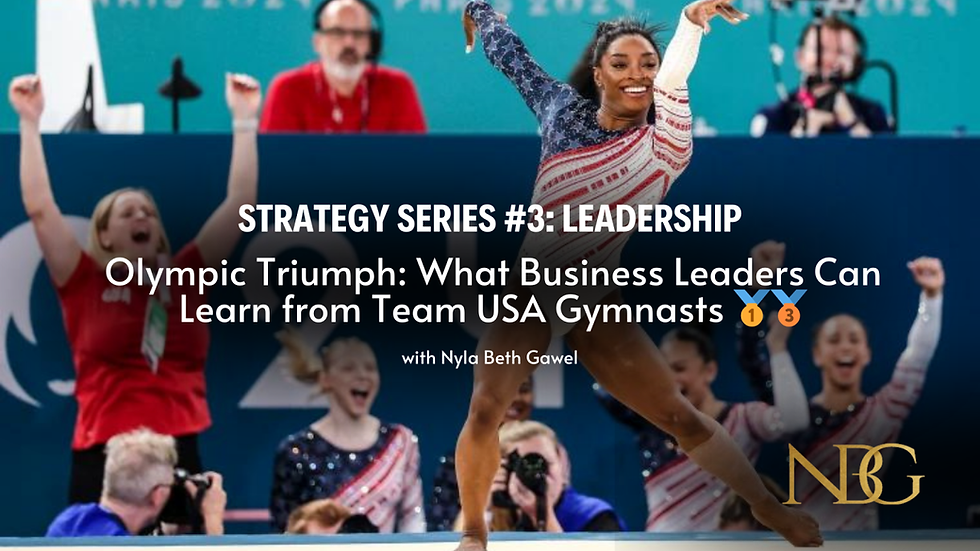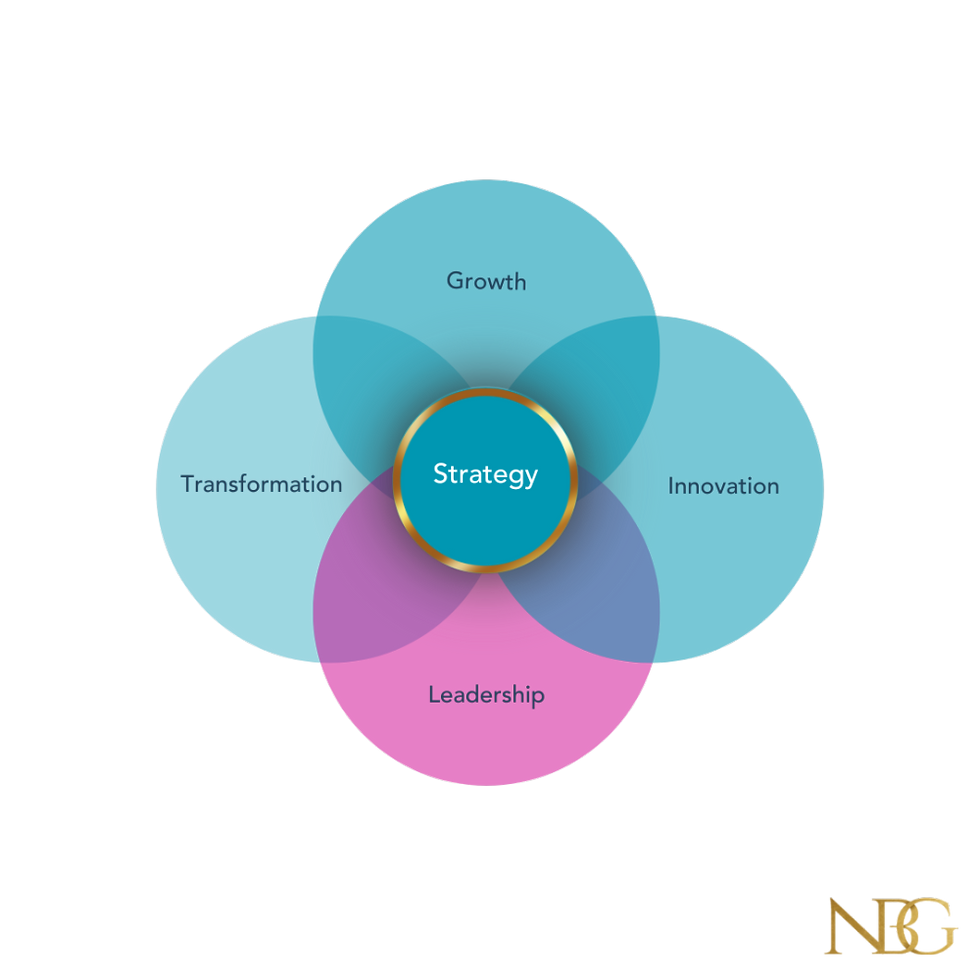Strategy Series #3: Leadership
- Nyla Beth Gawel

- Jul 31, 2024
- 4 min read

Spoiler Alert: the USA women’s gymnastic team won gold and the men’s team scored bronze! 🥇🥉
These achievements marked a pivot from the teams’ recent history accompanied by stories of redemption, rebranding, teamwork, and - for this #StrategyIRL moment - a lesson in leadership’s role in strategy execution. Gymnastics, much like swimming, track and field, is a team sport composed of individual competitors. Unlike our bronze medalist Women’s Rugby team (go USA!), these sports require that some of the most competitive athletes in the world prioritize collective success. It’s perhaps no surprise then that when any of them talk about their achievements, they start first with the collective - reminding us that there is no “i” in team (and not even a correctly spelled “me”).
“The second that we put it all together, it’s going to be magic.” - Suni Lee, USA Gymnastics Olympic Team Gold Medalist
What I gleaned from these champions is that their strategy for success as a team ultimately relied on the extent to which they:
Focused on total points on the board;
Remembered for whom they are competing;
Played to their strengths.
Leadership in all of these areas therefore became the catalyst to effective strategy execution.

Total Points Win Gold
“All ships rise with the tide” is one of my favorite metaphors for a strong leadership culture. I spent a significant portion of my career in a multibillion dollar single P&L company that still to this day dominates its market segment. While that structure doesn’t work for every organization, it created a culture in which leadership had to think “whole before part.” Similarly in a highly sales-incentivized organization, I again witnessed the use of individual incentives to drive collective success. What made that happen was tying sales quotas to company-wide targets and shifting those quotas to address market realities. The whole was managed as a full portfolio.
Where I’ve witnessed “sinking ships” is when leaders are allowed to prioritize self over group, resulting in sub-optimized cross-selling, inefficient allocation of corporate resources, and a diluted and inconsistent customer value proposition. While the strategy may outline collective and collaborative goals and objectives, if there is no leadership accountability in execution, then results tank.
Take for example swimmers Matt King and Ryan Held. In swimming 400m freestyle relay preliminary qualifying heats they “rose with the gold medal tide” despite not swimming in the finals. So too do corporate leaders rise when held accountable and motivated to contribute to the whole team’s growth, not just their own glory.
"I knew I had the whole U.S. behind me… and I knew I wanted to do the best routine possible for them. When you feel that deep in your heart, it happens, and you stick that landing." - Frederick Richard, US Olympic Team Bronze Medalist
Represent Your Stakeholders
Country pride runs rampant at the Olympics and repeatedly brings even celebrity athletes to prideful tears. Whether winning gold or simply completing the race, the passion of representing one's country is palpable.
Executives who truly lead in service of their customers, shareholders, and employees also engender similar followership, confidence, and results. This form of leadership requires alignment with a broader sense of purpose (aka: strategy vision and mission) and deep appreciation and modeling of core values. I’ve been honored to know and work with executives who have embodied their role as a stakeholder representative. You know them when you see and hear clear understanding of customer and market needs, when you witness consistency in behavior and values, and when they can speak knowledgeably about “why” and “how” an organization makes the decisions it does.
Reconsider When and Why to Reorganize
I have led in an array of corporate structures spanning functionally aligned to divisionally-based and matrixed. So often when faced with challenges tied to growth or market success, I’ve found myself hitting my head against a wall as executives wanted the strategy to focus primarily on organizational realignment. It’s the same logic as moving the deck chairs on the Titanic and expecting a change in its direction or the iceberg’s disappearance.
Yes, organizational structure is a facet of a strategic analysis in how to help an organization thrive. Rarely is it the full solution, and even more rarely should it be the first step. Instead, it is a component of strategy execution to maximize the strengths of each component of an organization. Leaders need to revisit why they’re reorganizing, what efficiencies they hope to create, and how the impacted departments or business units will be better able to play to their strengths. Like Coach Cecille Landi with the gymnasts, aligning a team against strengths is the best way to think about positioning leaders and their divisions for success.
As I get ready to attend my first Olympic event and take a break from day to day strategic activities, I’m inspired by these amazing athletes - from our Bethesda, MD local, Katie Ledecky, to the GOAT, Simone Biles. Not only does their determination and talent impress, but so does their embodiment of leadership in executing a strategy to achieve record-breaking collective success.
Cheers to all the organizational executives who realize the importance of collaborative, stakeholder-driven, and strength-focused leadership in driving strategy execution. GO TEAM USA!
NBG Strategy Consulting helps clients in designing and aligning operating frameworks that embrace innovation, transformation, growth, and leadership to increase employee and customer engagement in service of success goals.



Comments